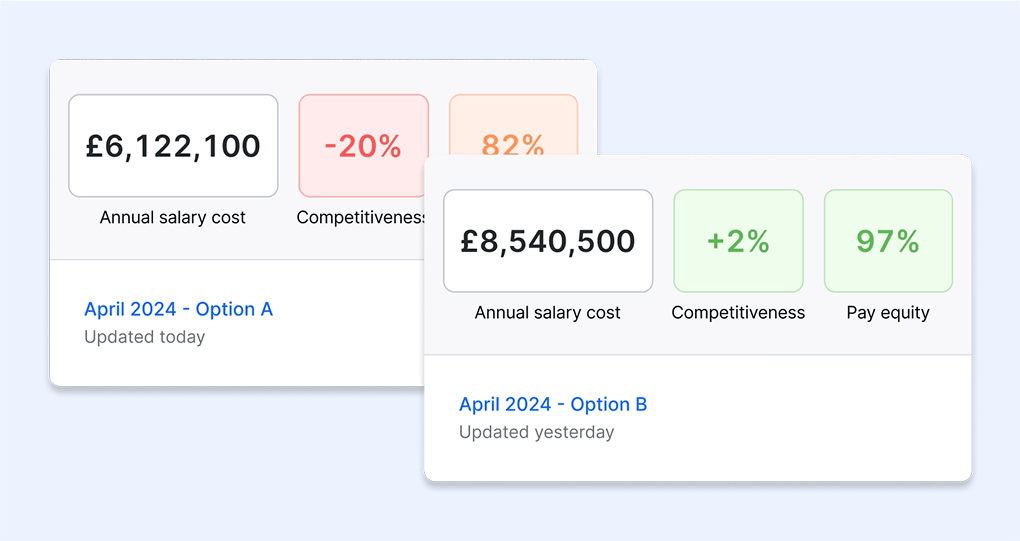Salary band outliers occur when employees are paid below or above the agreed pay range for their role.
There are many reasons that outliers can arise, but pay equity is the most important factor to look out for – especially with the increase in equal pay legislation.
Why do band outliers arise? Why should they be included in every pay equity audit? How can we fix overpaid or underpaid employees?
In this article we sat down with Isha Smith, Global Head of Rewards at music streaming company Soundcloud, to get her advice on these questions.

Subscribe to our newsletter for monthly insights from our compensation dataset and network of experts, to help you navigate a career in Rewards 📩
Why salary band outliers are a vital part of a pay equity audit
Salary band outliers can arise when certain groups of employees are compensated differently to others.
In terms of pay equity, systematic biases can lead to female employees being paid less than their male colleagues who perform equal work or work of equal value to them.
This makes it more likely that women will be at the lower end of their salary band or below the band as an outlier who is underpaid compared to the compensation structure.
If those discrepancies exist, then analysing where employees sit in their salary band by gender brings them to light – hence why salary band analysis should be a core part of any pay equity audit.
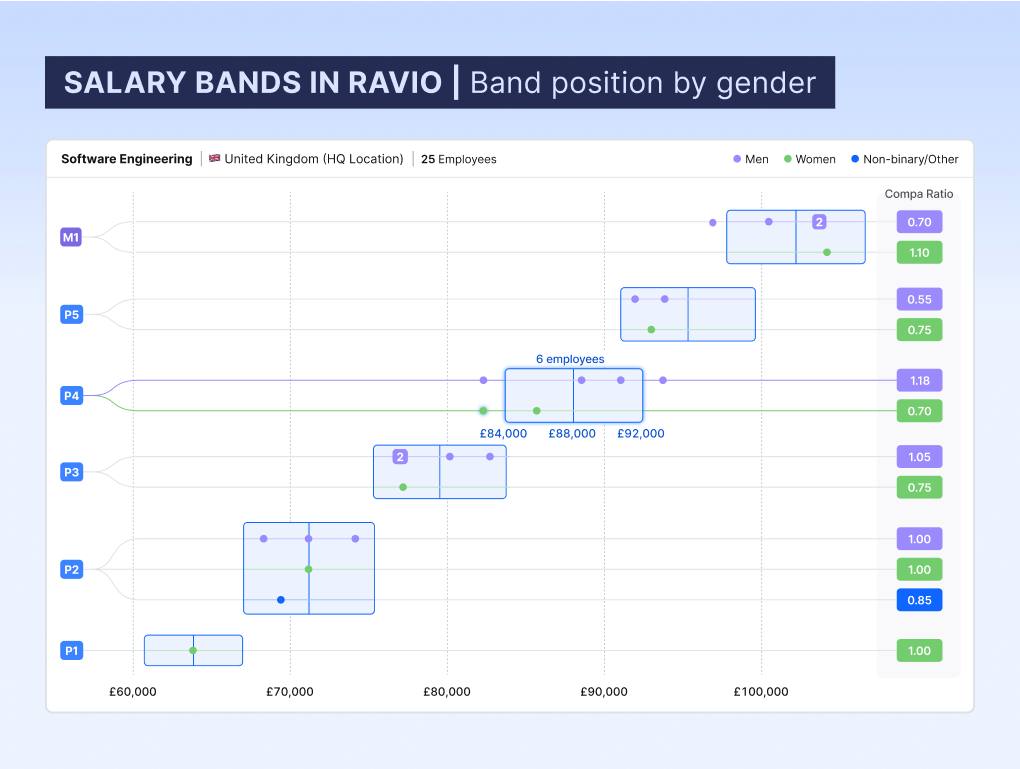
For Isha Smith, Global Head of Rewards at Soundcloud, this is why it’s vital to interrogate every salary band outlier closely.
“Introspection is crucial when it comes to salary band outliers,” she says. “If you aren’t able to look inwards and really dig into why those pay discrepancies exist within your company’s salary structure, systemic biases and pay equity issues may never come to light.”
"Introspection is crucial with salary band outliers, to ensure that systematic biases and pay equity issues come to light."

Global Head of Rewards at Soundcloud
📊 What are the most common root causes of pay discrimination towards women?
As part of our 2024 Pay Equity Report we analysed Ravio’s compensation database to find out why a gender pay gap exists in tech companies.
By far the most influential factor in terms of the unadjusted gender pay gap is seniority – there are significantly less women in senior positions than men, and the senior women that do exist are paid less than their male counterparts.
In terms of pay differences within a single salary band, one interesting finding is that the gender pay gap is way more likely to arise at the point of hiring than during an employee’s tenure.
To give an example, the median new hire salary for male P4 Software Engineers in the UK is £85,000 whereas for female software engineers it is £82,288 – giving an adjusted pay gap of 3.3%.

This indicates that the gender pay gap already exists with new hire salaries.
On the other hand, we found that there is no statistically significant difference in promotion rates or promotion pay increases between men and women.

So, if you do identify that salary band outliers tend to be women (or that female employees are generally in the lower part of the band whilst men are in the upper) then it’s well worth interrogating your hiring process.
How to address salary band outliers
Once salary band outliers have been identified, they need to be addressed.
This can be a challenging situation.
If an employee is being overpaid, then they’ll be reluctant to see their salary reduced (which is typically legally prohibited anyway) or frozen for future merit cycles.
If an employee is underpaid, finding this out could leave them feeling they’ve been unfairly treated, reducing trust in the company. Plus, a hefty one-off salary increase to bring them within the band could lead to heightened expectations for pay progression in the future.
Outliers need to be handled carefully, with the right communication too.
We asked Isha Smith, Global Head of Rewards at Soundcloud, how she would handle salary band outliers in her team.
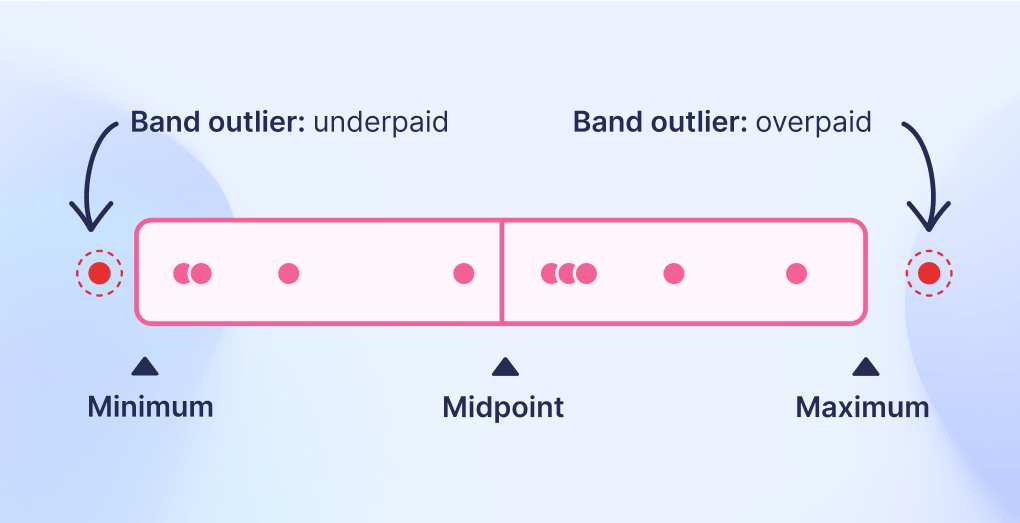
Step 1: Find out why the outliers exist
“Before you can address salary band outliers, you first need to understand how they came about,” says Isha, “Because this will make a big difference to how you handle them.”
We’ve already highlighted that salary band outliers can arise due to hiring discrimination and pay equity issues.
But there are several other reasons.
It could be that the employee has performed particularly highly within their role, and so has received abnormally high salary increases during each review cycle. Or they might have underperformed, and received abnormally low (or no) salary increases in their role.
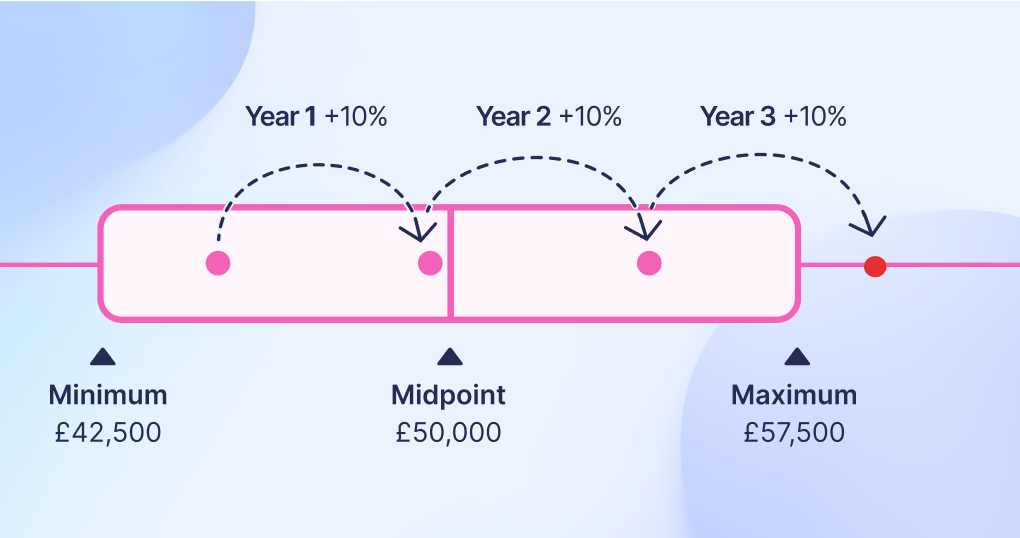
It could be that an exceptional candidate was hired with a particularly high starting salary to avoid losing them in the hiring process – which occurs particularly with business-critical roles that have been proving a challenge to hire for.
It could be that they were an early hire in a new startup and so were hired with a lower base salary than their colleagues who were brought into the team more recently.
It could be that there’s a lack of structure in how compensation decisions are made (or were made at the time an employee was hired), leading to inconsistent salaries. This is particularly common in early-stage startups, and when structure is introduced it leads to a lot of inconsistency to fix.
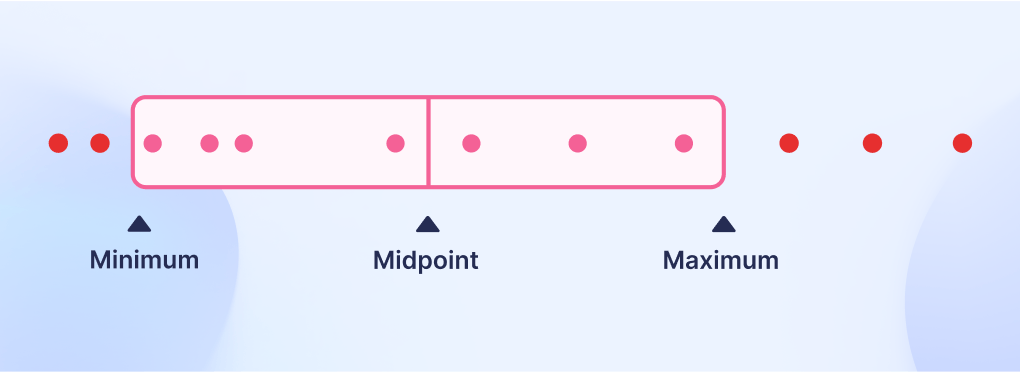
“These are all legitimate reasons for salary band outliers to exist,” Isha emphasises, “but nonetheless they do highlight areas of improvement for individual employee compensation packages and for the approach to compensation overall too.”
How you address a salary range outlier will vary depending on why it exists – so investigating and understanding should always be the first step.
Step 2: Decide whether to leave (for now) or adjust
If there are legitimate and justifiable reasons that an employee is paid above or below their salary band, it might be the case that you decide to not to take any action immediately.
For instance, if a high-performing employee has received outsized salary increases within their role, they might already be in-line for a promotion – in which case their salary will be adjusted and they’ll move into a new salary band at that point.
However, Isha is clear that even in these cases, “if you do decide to leave a salary band outlier as it is, it’s important to regularly monitor the situation to avoid worsening the spread of outliers and inconsistencies within the salary band structure over time.”
"If an outlier is justified and you decide to leave it as it is, make sure to regularly monitor it to avoid inconsistencies widening over time."

Global Head of Rewards at Soundcloud
Step 3: Make any adjustments needed
On the other hand, in many cases action needs to be taken quickly to bring the employee back within a salary band, especially in cases where employees are being unfairly underpaid due to issues identified during a pay equity audit.
There are many ways to approach this – and they differ depending on whether an employee is being underpaid or overpaid.
If you’re underpaying an employee, “the fairness approach is to issue a one-off salary increase as soon as possible,” says Isha, “ to bring the employee’s salary within the lower threshold of the band.”
However, Isha also highlights that this is often not possible immediately due to budget issues. In this case, her suggestions are:
- Issue incremental pay increases at set times until their salary is within the salary band – if you have a quarterly or bi-annual merit cycle process, this could be done in line with the normal review cycle
- Issue a one-off bonus in the short-term and seek to address the base salary issue when the next compensation review comes around
- If performance is the issue, implement a development plan to help the employee meet expectations for their job position and level – meaning they are able to access performance-based pay increases.
If you’re overpaying an employee, Isha highlights two typical approaches.
Firstly, you can ringfence the employee and freeze their salary for a period of time.
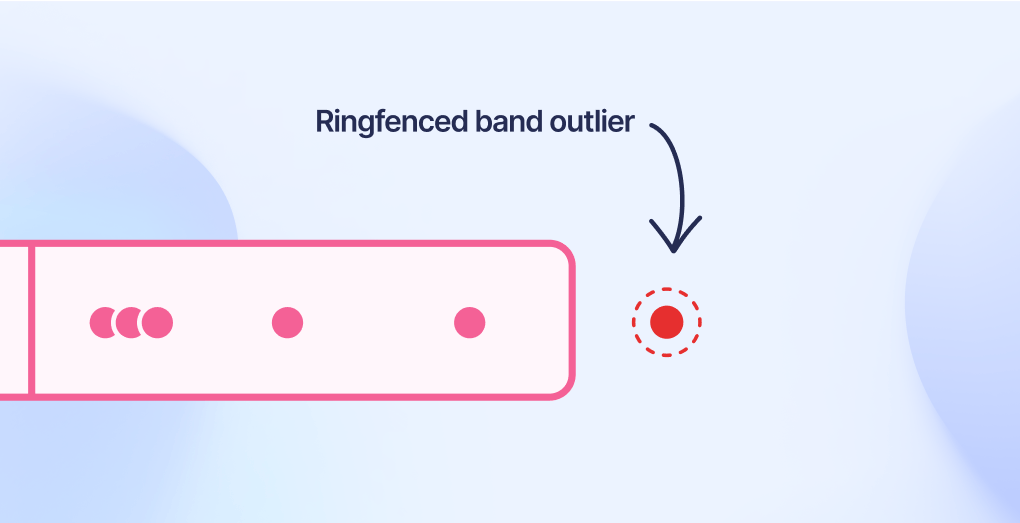
This allows time during with other employees will catch up by receiving salary increases, or the employee in question will progress sufficiently to be promoted to the next salary band, or the market will catch up and market adjustments will be needed for all employees to bring them back in line with benchmarks – in all cases providing opportunity for the outlier to be fixed.
“Depending on the employee’s performance,” Isha says, “you might decide to still allow the employee to receive other compensation increases such as a performance bonus or an equity refresh grant during the time their base salary is ringfenced.”
💡How should you communicate to the employee that their salary is being frozen?
Regardless of the action you decide to take to bring an employee back within a salary band, it’s always going to lead to a difficult conversation.
Particularly difficult is when you have to ringfence an employee and freeze their salary.
For Isha, compensation data is vital for successful communication:
”Naturally everyone wants more pay in an ideal world – but we also recognise that we wouldn’t like it if our colleagues were paid very differently to us. So, I find that having data to hand helps in these conversations, so that the employee is able to see the fairness issue for themselves and understand why their salary is being frozen.”
Alternatively, if outstanding performance has led to the employee being overpaid within their existing salary band, then a better option might be to implement a development plan to enable the employee to achieve promotion to the next job level and salary band.

Step 4: Look for patterns to avoid outliers occurring againStep 4: Look for patterns to avoid outliers occurring again
“Once individual adjustments have been made to address specific salary band outliers,” Isha says, “it’s important to also take a step back and look for patterns that could indicate a structural issue with how compensation decisions are made within the company.”
Of course, as we’ve seen, pay equity issues are a vital part of this.
Systematic bias during key moments such as salary negotiations or calibration sessions will inevitably lead to salary band outliers caused by pay inequity, over time.
If outliers do seem like they could be caused by pay equity issues, it’s very important to interrogate more closely. Analyse your existing hiring processes and compensation review processes and make improvements, introduce additional training on bias, and so on.
“There’s a balance at play with salary bands between framework and flexibility,” Isha continues. “It’s fine to have exceptions – your hiring managers should have the flexibility to reward exceptional candidates and employees. But, you also need to be clear that they are exceptions, because otherwise the exceptions become the norm, and that’s where pay equity issues can arise.”
"Salary bands are always a balance between framework and flexibility. It’s fine to have exceptions to enable flexibility, but it isn’t fine for those exceptions to become the norm, because that’s when pay equity issues arise."

Global Head of Rewards at Soundcloud
If salary band outliers are arising regularly, it my also be that the salary band structure is not fit for purpose and needs to be revisited, which can easily happen when an increase of hiring leads to the team outgrowing the existing structure.
Typically this means that more granular salary bands need to be introduced – moving from a company-level approach to a department-level approach, or a department-level approach to a role-level approach.
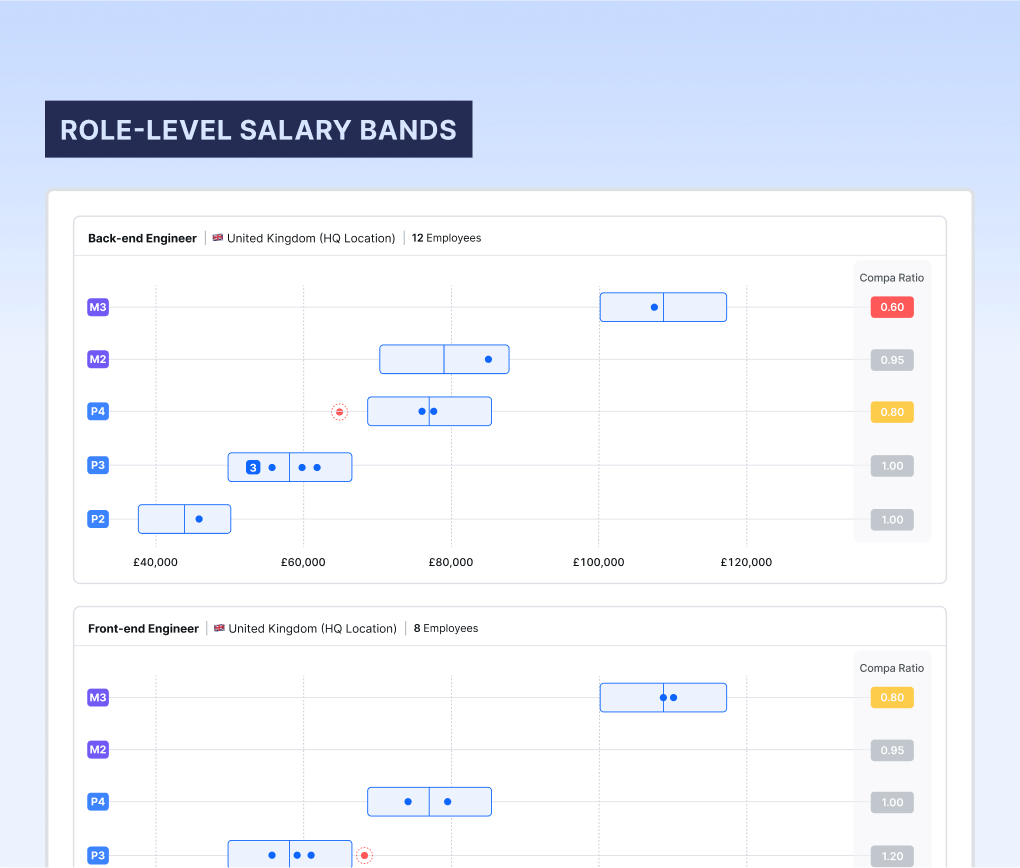
Alternatively, it might be that the salary benchmarking data that has been used to build the salary ranges is out-of-date.
This can lead to more outliers than usual because new hires end up needing higher starting salaries to align with market demand. In this case it’s important to refresh the underlying benchmarking data to bring consistency back between new hires and existing employees.
We’d recommend updating the benchmarking data at least once per year during your compensation review.
Best practice is to use a real-time tool like Ravio’s salary bands software, which enables you to check how your internal salary bands align with real-time market data at any given time.
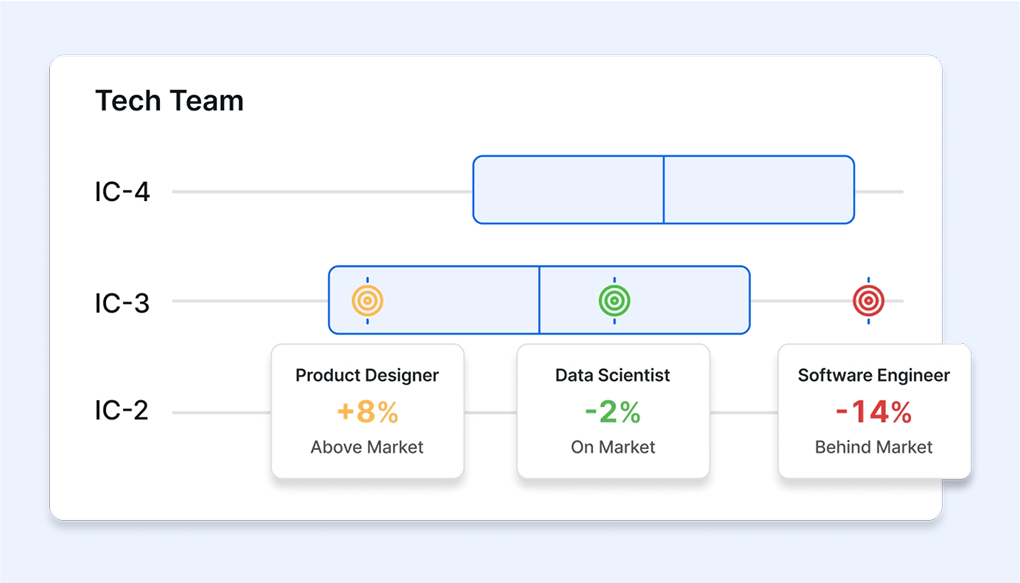
Plus, you can also instantly see how employees are spread within each salary band and highlight outliers above or below the band in Ravio’s platform too.
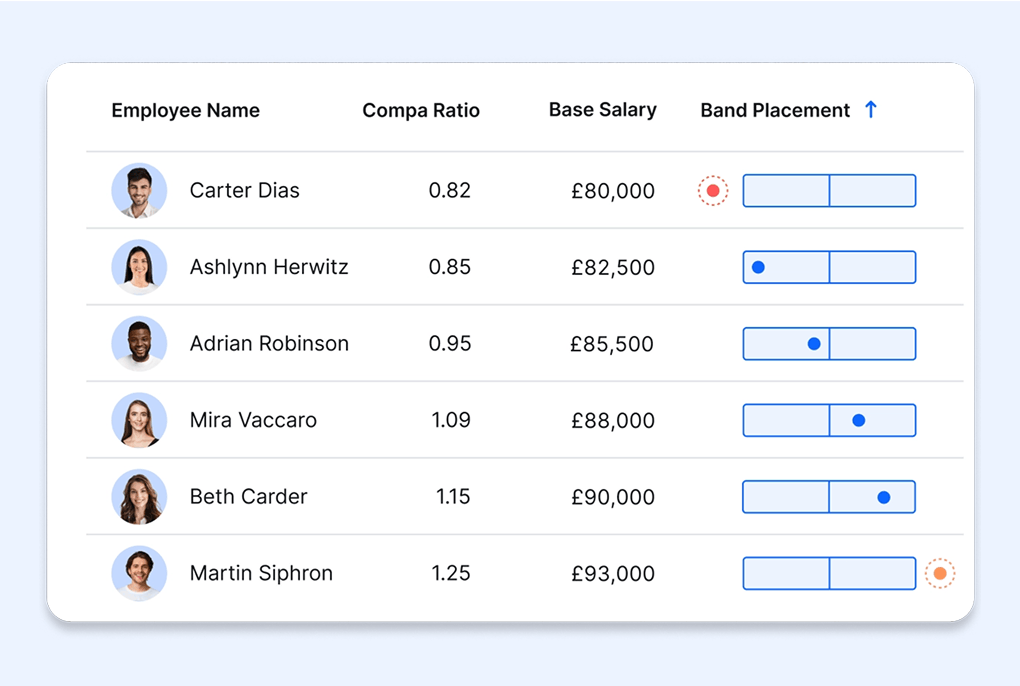
And, with our ‘budget forecast’ feature you can also immediately find out how much it would cost to bring all employees back in line with the band structure at just the click of a button – so you can analyse pay equity actions against budget needs too.
